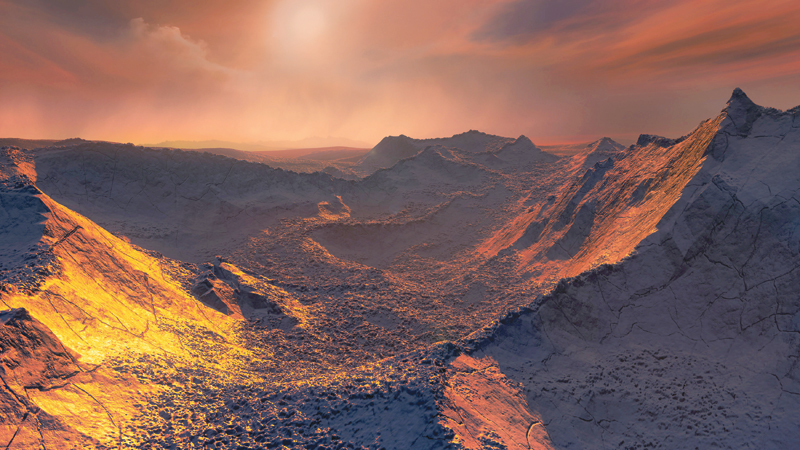

WASHINGTON: A frozen and dimly lit planet, dubbed a “Super-Earth,” may be orbiting the closest single star to our solar system, astronomers said, based on two decades of scientific observations.
The planet, estimated to be at least 3.2 times more massive than Earth, was spotted circling Barnard’s Star, a type of relatively cool and low-mass star called a red dwarf, about 6 light-years away from our solar system, comparatively close in cosmic terms. It is believed to orbit Barnard’s Star every 233 days.
Planets orbiting stars beyond our solar system are called exoplanets. Nearly 4,000 have been discovered. The newly discovered one is the second closest to our solar system ever found. It is thought to be a “Super-Earth,” a category of planets more massive than Earth but smaller than the large gas planets.
“After a very careful analysis, we are 99 per cent confident that the planet is there,” researcher Ignasi Ribas of the Institute of Space Studies of Catalonia and the Institute of Space Sciences said. — Reuters
“However, we’ll continue to observe this fast-moving star to exclude possible, but improbable, natural variations of the stellar brightness which could masquerade as a planet.” The only closer stars than Barnard’s Star are part of the triple-star system Alpha Centauri, located a bit more than 4 light-years from our solar system.
Two years ago, astronomers announced the discovery of a roughly Earth-sized planet circling Proxima Centauri, part of the Alpha Centauri system, in an orbit that might enable liquid water to exist on its surface, raising the possibility that it could harbor alien life.
The newly detected planet orbiting Barnard’s Star may not be so hospitable, with surface temperatures of perhaps minus 274 degrees Fahrenheit (minus 170 degrees Celsius). Barnard’s Star provides the frigid planet only 2 per cent of the energy that the sun provides Earth.
The researchers studied the planet by combining measurements from several high-precision instruments mounted on telescopes around the world.
The research was published in the journal Nature. -- Reuters
Oman Observer is now on the WhatsApp channel. Click here



